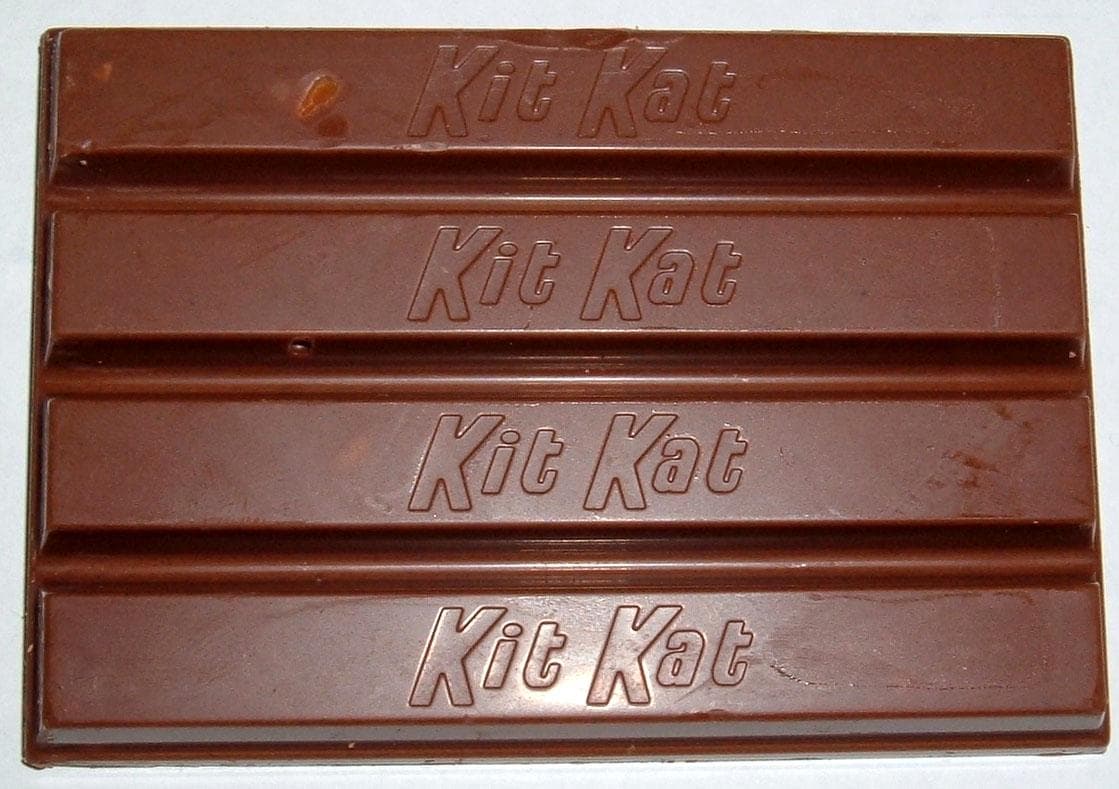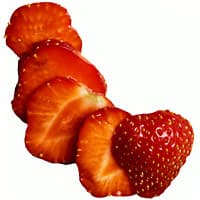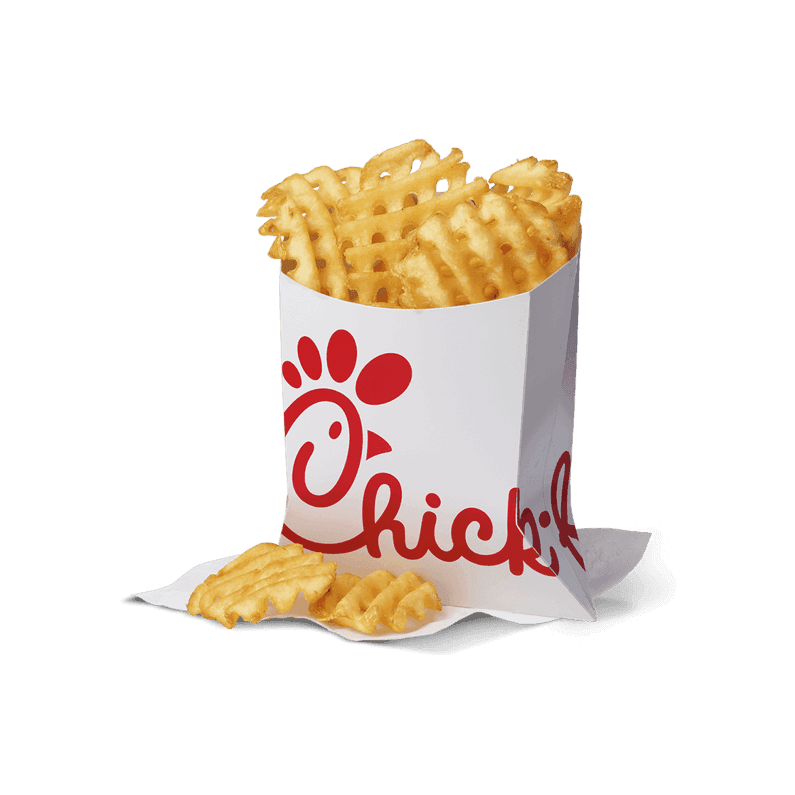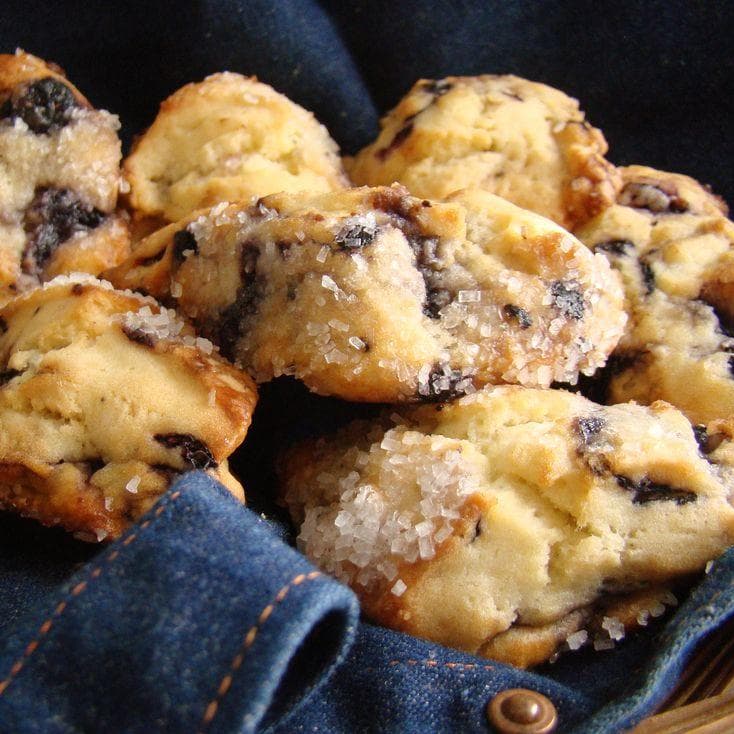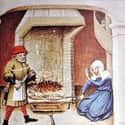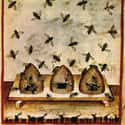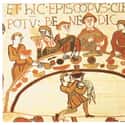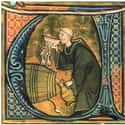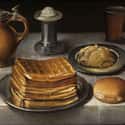-
(#1) In Cities, The Equivalent Of 'Drive-Throughs' Provided Fast Food For The Lower Classes
In the 12th century, William Fitzstephen marveled over a London cookshop: "There eatables are to be found every day, according to the season." Customers, including tourists and Londoners, grabbed what they wanted at the cookshop and usually brought it home - the medieval version of take-out.
Fast food was popular in medieval Europe. Many couldn't afford the cooking utensils and fuel needed to cook at home, so they visited cookshops or bought other street foods. Near the Thames in London, shops open around the clock offered meat pies, pancakes, bread, and sweets.
These cookshops functioned like medieval drive-throughs, where customers walked up to buy hot, prepared food.
-
(#2) Meat Pies Were The Medieval Big Mac - As Long As The Meat Wasn’t Spoiled
Londoners bought meat pies and pasties on the street, hot and ready to eat. As the medieval version of the Big Mac, meat pies were filling and portable.
But medieval customers had to watch out for spoiled meat in their fast food. A 13th-century source from Norwich reports that cooks were using diseased pork and serving it to customers. Meat pie shops sometimes warmed up spoiled pies that were several days old rather than waste them. Undercooked meat was also a major problem.
Cooks eventually earned a bad reputation for throwing spoiled or tainted meat into their pies. One saying claimed that God sends the meat, but the devil sends the cooks.
-
(#3) Honey Was More Common Than Sugar For Satisfying A Sweet Tooth
Sugar was expensive during most of the medieval period, putting it outside the reach of most people. Instead of using sugar in sweets, many recipes called for honey.
One fritter recipe from England stuffed fried dough with gingered almonds and topped the fritter with honey. Another recipe called for honeyed fritters with herbs.
Gingerbread was another common medieval sweet that used honey. In one gingerbread recipe, the cook started by clarifying honey and then stirring bread crumbs into the honey and letting it simmer. Spices like ginger, cloves, and pepper gave the gingerbread a strong, sweet flavor.
-
(#4) Bread Bowls Added Delightful Carbs To Soups And Stews
Bread was one of the most common foods Europeans bought in shops rather than make themselves. In 41% of urban households, people didn't own their own grain - which meant they were buying bread from bakers.
In addition to buying loaves of bread, people could buy prepared hot foods that customers ate immediately, like meat pies.
Customers could also bring their own meat to a bakery and ask the baker to wrap it in bread and bake it. In 1350, London even passed a law banning bakers from charging over a penny to people who provided their own meat.
Medieval Europeans also pioneered the bread bowl, though they called them trenchers. Soups and stews were often served in a bread bowl to bulk up the meal.
-
(#5) Poor Londoners Bought Take-Out Because They Didn't Have Hearths
Across Europe, the poor were the most likely to visit cookshops, the medieval equivalent of a fast food drive-through.
In London, people visited cookshops close to the Thames, which catered to travelers and merchants, and in poor neighborhoods. In these neighborhoods, people packed into tenement housing that often lacked a hearth, meaning they couldn't cook at home. Instead, people went to cookshops and bought take-out.
Cookshops weren't just a European phenomenon. In 12th-century Jerusalem, residents named one area "the Street of Evil Cooking" because of all the cookshops.
-
(#6) During Lent, Many Europeans Turned To Alcohol As The Ultimate Convenience Food
Medieval Europeans liked to drink. And Lent didn't change that.
During Lent and many other fasting days, Europeans were supposed to abstain from meat. In its place, many ate fish, since medieval Europeans believed fish reproduced asexually and thus didn't count as meat. Others turned to alcohol.
Around 1400, a Benedictine monk named Robert Ripon complained about all the men who drowned their sorrows during Lent:
In this time of Lent, when by the law and custom of the Church men fast, very few people abstain from excessive drinking: On the contrary, they go to the taverns and some imbibe and get drunk more than they do out of Lent, thinking and saying: "Fishes must swim."
-
(#7) Funnel Cake Made Its First Appearance As A Junk Food Par Excellence
When it came to sweets, medieval Europeans loved custards, cakes, and fritters. In fact, funnel cakes made their first appearance in the medieval era.
According to a medieval cookbook, the English loved fritters of all kinds. Some recipes called for figs, apples, and almonds as fritter ingredients. The first funnel cakes were called cryspes, or fried cakes topped with sugar.
Because medieval ingredients were more limited than today, Europeans got creative with their fritters, even frying up sweetened cottage cheese and calling it fritter of milk.
-
(#8) Pretzels Became A Tasty Symbol Of Good Luck
Soft pretzels were a popular treat in medieval Europe. They also carried the seal of approval from the Catholic Church, since the medieval pretzel recipe called for just three simple ingredients: water, flour, and salt. During fasting periods, when the church banned animal products, pretzels offered a flavorful alternative.
Monks sometimes handed out pretzels to children who recited their prayers. As pretzels grew in popularity, they became a symbol of good luck and prosperity. Thanks to their link with the church, pretzels also became a sign of spiritual health. In some areas, people distributed pretzels to the poor.
-
(#9) Desserts Were So Important That The Word 'Dessert' Came Into Being
What kinds of junk food desserts did medieval Europeans eat? According to an English cookbook called Cariadoc's Miscellany, people loved all kinds of tarts. The crisp crust might be topped with berries, fruits, or ginger.
The English also ate a dessert called cuskynoles, a sweet ravioli filled with fruit. Gingerbread and cheesecake were popular dessert treats, as were cakes and cookies.
In fact, desserts were so popular that the word "dessert" traces its origins back to the end of the medieval era. By the mid-16th century, the French used the word dessert to mean "last course," from the word desservir, which meant "to clear the table." In English, the word came to mean the final course of fruits and sweets that people ate after their meal.
-
(#10) In Bristol, Cook's Row Served Up Fast Food
In many urban areas, one street became known as the fast food capital for the city. In Bristol, Cook's Row catered to customers looking for fast, tasty food. The cookshops offered all kinds of food, including geese, rabbits, and fish. Customers could pick up some cooked chicken on Cook's Row and buy a loaf of bread from a nearby baker to make a meal.
In London, cookshops sold all kinds of foods, including roasted and fried meats. They also offered pies, pancakes, and hot cakes.
Bristol's cookshops had their own hearths, where they stewed meat or roasted it on a spit. These shops sat directly on the street, where customers could smell the foods and grab a bite to eat.
-
(#11) Medieval Europeans Invented Waffles
Waffles existed before the medieval era, but medieval Europeans turned waffles into junk food.
The idea of cooking flat cakes between metal plates dates back to ancient Greece. These cakes, known as obelios, weren't sweet like today's waffles. Medieval Europeans ate waffle wafers made in a similar fashion. The Catholic Church cranked out wafers of flour and water that showed Biblical scenes.
The Crusades widened European culinary tastes, and Crusaders brought back new additions to the waffle wafer batter, including cinnamon, honey, and cream. In the 15th century, creative Dutchmen invented the rectangular, grid-patterned plates.
Late medieval Europeans could buy a "wafel" on the street as a fast food option. In the 18th century, an English cookbook added a second "f" to make it waffle.
-
(#12) By The 16th Century, Europeans Developed A Taste For Sugared Meat
The discovery of the New World made sugar much cheaper and more available in Europe. By the 1540s, a London sugar refinery began cranking out 14-pound cones of crystallized sugar. Londoners quickly began adding sugar to almost every food imaginable.
Many desserts began to feature sugar, including crystallized fruits and syrups. But Europeans also began seasoning their meats with sugar. In addition, people liberally used sugar on fish and vegetables. The desire for sweeter foods transformed the European diet for centuries.
New Random Displays Display All By Ranking
About This Tool
Although it is officially regarded fast-food as a unique invention in the late 20th century, actually, fast-food has appeared in major cities since the Middle Ages, especially in relatively developed European cities, where many poor or single adults live in the small room, they have no money or space to store food, nor can they afford cooking utensils or fuel. Medieval junk food may not be known because of its versions.
Some of the medieval junk foods have been improved and innovated, then have become daily foods or traditional foods in our lives. You could find some information about random 12 medieval junk foods here.
Our data comes from Ranker, If you want to participate in the ranking of items displayed on this page, please click here.




